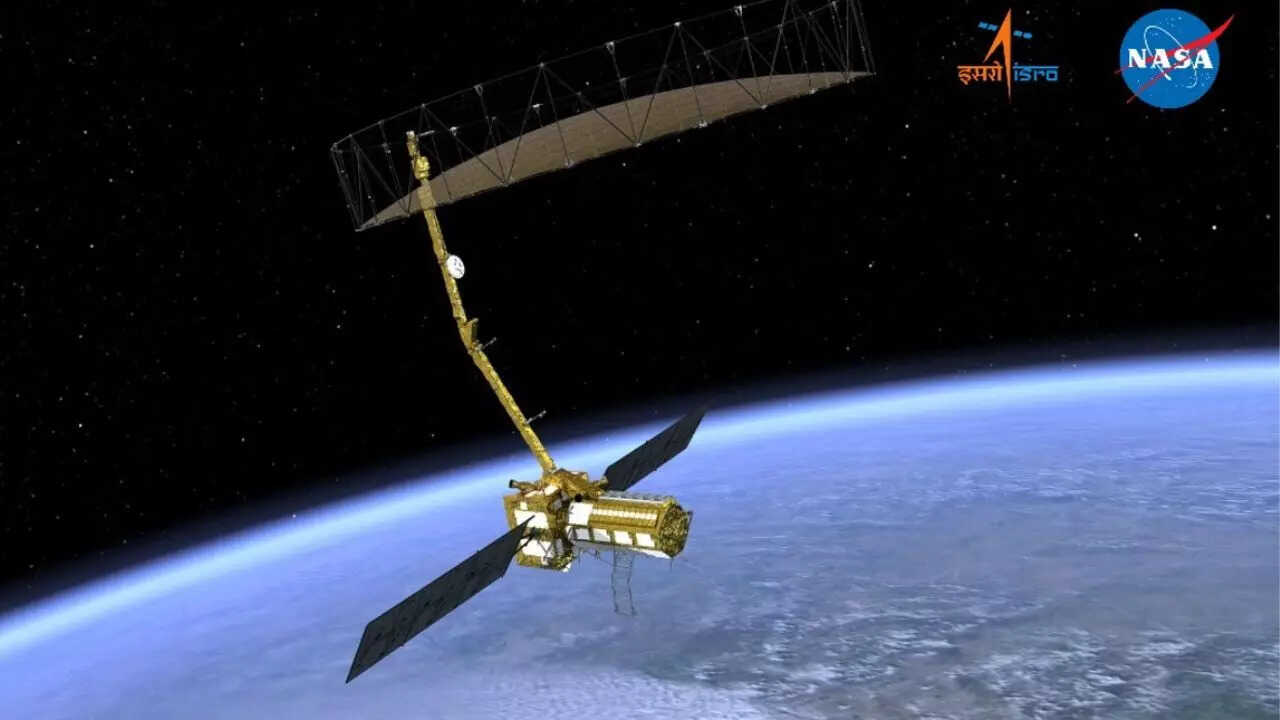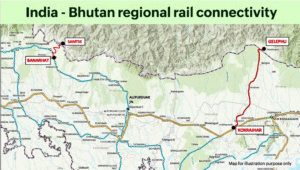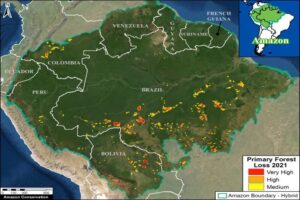
NISAR Set for Launch: India-US Joint Satellite to Revolutionize Earth Monitoring
GK & Current Affairs for CLAT | CLAT Current Affairs 2026
Powered by CLAT Gurukul – Best online coaching for CLAT
Introduction (Why in News)
On July 29, 2025, the Indian Space Research Organisation (ISRO), in collaboration with the US space agency NASA, launched one of its most ambitious and technically advanced missions, NISAR (NASA-ISRO Synthetic Aperture Radar). The satellite was placed in orbit using a GSLV rocket from Sriharikota, making it the first time this heavy launch vehicle was used to deploy a satellite into a Sun Synchronous Polar Orbit—a feat previously performed using PSLVs.
The mission is globally significant due to its focus on real-time Earth monitoring, including earthquakes, landslides, surface water changes, permafrost analysis, and volcano detection. For CLAT aspirants, NISAR stands as a key development in science and technology, India-US collaboration, and disaster management policies—all important themes under CLAT Current Affairs 2026 and General Knowledge.
Point-Wise Summary
- What is NISAR?
- NISAR (NASA-ISRO Synthetic Aperture Radar) is a next-generation Earth observation satellite.
- Jointly developed by ISRO and NASA, it is equipped with dual-band radar systems to observe minute Earth surface changes.
- It is the first major hardware collaboration between Indian and American space agencies.
- Significance of Launch
- The launch took place using India’s GSLV rocket—the first time it was used for a Sun Synchronous Polar Orbit (SSPO) mission.
- PSLV was not capable of launching such a heavy satellite, hence the GSLV was selected.
- The orbit allows the satellite to scan the same point on Earth at the same local time every day, vital for climate and surface change monitoring.
- NISAR Satellite Specifications
- Weighs 2,392 kg.
- Operates in a 747 km circular orbit.
- Completes one Earth orbit in about 12 days to provide high-resolution global scans.
- Capable of detecting changes as small as a few centimeters on Earth’s surface.
- Observation and Disaster Response
NISAR will revolutionize the way Earth is monitored, especially for disaster management. Key capabilities include:
- Detecting changes in surface water, soil moisture, permafrost, land shifts, and vegetation.
- Monitoring earthquake-prone zones, fault lines, and volcanic activity.
- Will enhance India’s and the world’s early warning systems and post-disaster damage assessment.
- Advanced SAR Technology
- Uses Synthetic Aperture Radar (SAR) to scan Earth’s surface.
- ISRO’s S-band radar is sensitive to smaller features, while NASA’s L-band radar is designed to detect deeper surface changes.
- Radar can function in all weather conditions, day or night.
- Why This Collaboration Matters
- Highlights the India-US strategic space partnership.
- NISAR is the first integrated satellite with American and Indian radar payloads.
- Marks a successful scientific diplomacy initiative that began nearly a decade ago.
BOOST TO CALAMITY RESPONSE (Applications of NISAR)
Use Case | Details |
Surface Water and Soil Moisture Monitoring | Helps track water availability, predict droughts, floods, and guide irrigation policies. |
Earthquakes | Tracks fault zones, helps in risk zoning, early warnings, and post-disaster analysis. |
Permafrost Observation | Monitors frozen subsurface layers, important for climate science and Arctic region communities. |
Volcanic Eruption Forecasting | Detects subtle ground changes that can predict volcanic eruptions ahead of time. |
Glacier and Ice Sheet Melting | Assesses global warming impacts and predicts sea level rise scenarios. |
Urban Development & Ecosystems | Monitors urban expansion, forest changes, and wetland loss to inform urban planning. |
Explanation of Key Terms for CLAT Aspirants
Term | Explanation |
NISAR | NASA-ISRO Synthetic Aperture Radar, an Earth-observing satellite for real-time global monitoring. |
GSLV (Geosynchronous Satellite Launch Vehicle) | Heavy-lift rocket developed by ISRO, capable of placing large satellites into higher orbits. |
Sun Synchronous Polar Orbit (SSPO) | A type of orbit that allows the satellite to observe the Earth under consistent lighting conditions. |
Synthetic Aperture Radar (SAR) | Radar system used to create high-resolution images by bouncing microwaves off the Earth’s surface. |
S-band and L-band | Frequency ranges used in radar technology. L-band can penetrate deeper; S-band provides fine surface details. |
Permafrost | Layer of permanently frozen ground found in polar regions. Its melting indicates climate change. |
Fault Zones | Areas where Earth’s tectonic plates meet and are prone to earthquakes. |
Volcanic Precursors | Geophysical signals indicating potential volcanic eruptions, such as ground swelling or gas emissions. |
Relevance to CLAT Current Affairs 2026 and Law
- Disaster Management Framework
- NISAR supports the objectives of Disaster Management Act, 2005.
- Its use in early warning and mitigation aligns with India’s National Disaster Risk Reduction Strategy.
- Climate Change Monitoring
- Facilitates India’s reporting under Paris Agreement (UNFCCC).
- Helps track progress toward Sustainable Development Goals (SDGs) like climate action (SDG 13) and life on land (SDG 15).
- International Space Law and Diplomacy
- Showcases India’s participation in peaceful space exploration, aligning with Outer Space Treaty (1967).
- Advances India’s space diplomacy in tandem with NASA and other global partners.
- Legal Provisions Relevant to Space Technology
- Article 51(c) – promotes international peace and cooperation.
- Article 21 – right to life includes the right to a safe environment, potentially impacted by natural disasters monitored by NISAR.
- Article 48A – Directive Principle to protect and improve the environment.
Conclusion
The launch of NISAR is not merely a technical feat—it is a landmark event in international collaboration, disaster preparedness, and environmental protection. It reflects India’s readiness to harness cutting-edge science for public welfare and sustainable development.
For CLAT aspirants, NISAR offers a perfect example of how policy, law, environment, and international relations intersect through technology. It underlines India’s strategic capacity in space, its commitment to global challenges, and the importance of science-informed governance—critical themes for any future law professional in an evolving, climate-sensitive world.
This Blog is Powered by CLAT Gurukul — India’s Leading Law Entrance Prep Platform
At CLAT Gurukul, we believe in empowering future legal minds with the right blend of knowledge, strategy, and mentorship. This blog is a reflection of our commitment to quality content that not only helps aspirants stay updated but also sharpens their conceptual clarity.
Why CLAT Gurukul?
- Personalized Mentorship by Top Legal Educators
- Comprehensive Study Materials & Legal Updates
- Daily Practice Sets, Mocks & Performance Tracking
- Result-Oriented Strategy for CLAT, AILET, and CUET
Whether you’re reading this article to deepen your understanding or to stay ahead in your exam prep — you’re already one step closer with CLAT Gurukul by your side.
Join thousands of successful aspirants who trusted CLAT Gurukul and cracked India’s top law entrance exams.
Visit https://www.youtube.com/@CLATGurukul/shorts to learn more or speak to our experts now!
Note from CLAT Gurukul
At CLAT Gurukul, we are committed to providing free CLAT study material, including CLAT current affairs, legal reasoning practice sets, general knowledge updates, logical reasoning questions, English comprehension exercises, and more — all curated by top mentors.
Our blog section is regularly updated with high-quality CLAT content tailored to match the evolving pattern of the CLAT UG exam. Whether you’re looking for CLAT 2026 current affairs, CLAT legal reasoning passages, or mock practice sets, we have you covered.
We believe in open-access learning and will continue to publish free CLAT preparation resources to help serious aspirants succeed.
Explore more free content under categories like:
Best online coaching for CLAT, CLAT current affairs, CLAT GK updates, CLAT legal updates, CLAT logical reasoning, and CLAT English preparation.
For structured learning, daily mocks, and expert mentorship, visit https://www.youtube.com/@CLATGurukul/shorts — the Best CLAT Coaching in Patna and India’s most trusted platform for CLAT online coaching.




